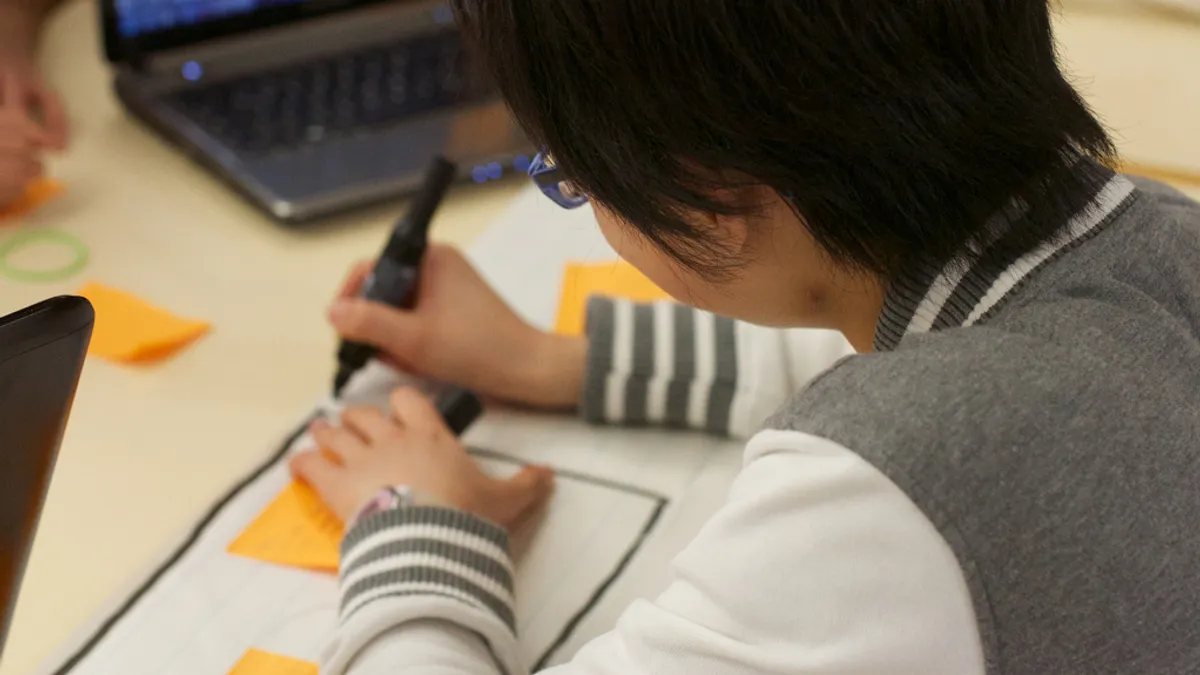Dive Brief:
- In a webinar two weeks ago, visual learning expert Linda Hodgdon explained five ways teachers and school leaders can adapt their instructional strategies to aid autistic students.
- The presentation was part of a digital learning community for teachers interested in improving how they teach and support autistic students.
- With a particular focus on how technology can support instructional techniques, Hodgdon and her fellow presenter, instructional design expert Lauren Stafford, paired teaching tips with tech tools.
Dive Insight:
One of the biggest takeaways from Hodgdon’s approach was that communicating effectively with autistic students requires taking a multi pronged approach. Hodgdon recommends using a combination of different media to get a message across, from drawing pictures and acting something out to education technology tools like interactive boards or iPad drawing apps. For timed activities, use visual cues like smartphone timers to help students manage their time and know when to stop and start activities.
Helpful strategies often go beyond direct instruction. For example, the classroom’s visual environment can make a big difference in how students with autism learn. One point provided by eSchool News in its writeup of the webinar: “Examine transitions–how does each student know where to go? Does the student know what to do when he or she goes to an area? How does the student know when the activity is finished and what will happen next?” Stafford recommends providing visual cues like maps and prominently marked work stations to help guide students along.












